Journey of D-backs’ Takahashi shows value of being multilingual
Jan 3, 2019, 11:00 AM | Updated: 2:40 pm
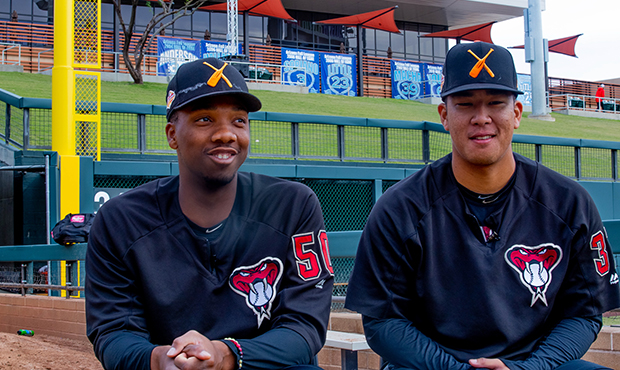
Tyler Mark, who is from Los Angeles, and Bo Takahashi, who is from Brazil, are right-handed pitching prospects in the Diamondbacks organization. The two roomed together during the Fall League season and say they speak Spanish almost exclusively at home. (Photo by Erica Block/Cronkite School)
(Photo by Erica Block/Cronkite School)
SCOTTSDALE – It’s a cool November evening in this desert city. Bo Takahashi, a 21-year-old pitcher from Presidente Prudente, Brazil, warms up in the bullpen before taking the mound for the Salt River Rafters. He is preparing to play in what is, at that moment, the only Major League-affiliated baseball game in the world.
Takahashi, a third-generation Brazilian with roots in Japan, signed a minor league free agent contract with the Arizona Diamondbacks in 2013. He fires each pitch to Tres Barrera, a Texas-born catcher in the Washington Nationals organization, who fires back encouragement in Spanish.
Meanwhile, pitching coach Dave Burba, of Dayton, Ohio, and the Colorado Rockies organization, offers small tips to Takahashi in English to ensure his starting pitcher is ready to go.
It’s not your typical baseball scene. The baseball season is usually over in October. Arizona is supposed to be warm. And don’t Brazilians speak Portuguese?
But this is baseball, and in particular the Arizona Fall League. The sport has become increasingly bilingual in the last half century, with more than a quarter of major league players coming from Latin American countries.
And perhaps no person is more emblematic of the uniqueness of this setting and this sport than Takahashi. Through players like him, baseball clubhouses have become more diverse, transforming into multilingual hubs of community and culture and connecting players from different countries, dialects and upbringings.
“Bo has been a godsend for me for a lot of this (language) stuff,” said Shelley Duncan, Takahashi’s manager for parts of the last three seasons and the hitting coach for Salt River in the fall. “He’s been my dude when it comes to a lot of the communication with guys.”
Connection counts
The Arizona Fall League, in many ways, is an anomaly. But the unique environment is considered to be the “graduate school” of baseball, and a vital place for up-and-coming prospects to play.
Each of the 30 teams sends seven of their top prospects to Arizona for the six-week season. The Fall League’s six teams are made up of a combination of players and coaches from five MLB organizations, allowing players who would otherwise only be competing against one another a chance to play with different players and receive instruction from different coaches.
The league’s purpose is to give valued minor league prospects an opportunity to log some extra at-bats or innings on the mound. The additional playing time can help a player make up for any missed time in the regular minor league season, or help a player develop a little longer, with the intent of being ready to take a major step up the minor league system faster as the next season comes around.
But given all that, including the high level of competition, it’s still an offseason league – and one in which there is not as much emphasis placed on winning as there would be in the regular season. The timing allows the league to feel more relaxed as players progress through the six weeks.
“The toughest thing is getting the reports to each organization,” Burba said with a laugh. “But other than that, it’s been a great group of kids, great staff to work with. It’s a pretty laid-back atmosphere, and guys have shown up and done a great job of being prepared to play every day.”
That same quickness does make one element much more difficult, though: getting to know your teammates. For any player, there’s not only (on average) a group of seven players and a coach or two from four different organizations to get to know, there’s no guarantee you know all of the players or the coaches from your own organization coming to the Fall League.
That’s what happened for Mitch Horacek, a left-handed pitcher in the Colorado Rockies organization.
“I just met (fellow Rockies minor-leaguer and Fall League roommate) Justin (Lawrence) at the Fall League,” Horacek said. “We share a pretty small apartment, so it’s pretty close quarters, but it’s been fun.”
The living arrangement for the Rockies pitchers also highlights the heightened impact of the language gap, intensified by the short timeline of the Fall League. While that gap can be closed over the course of a five-month season, it’s a lot tougher to do in less than two months.
But in that space, players who are bilingual can step in and make a noteworthy impact on a ballclub. Others have noticed Barrera stepping into that role around the Rafters.
“He’s just so good with the pitchers in communicating because he knows both languages,” said Arizona Diamondbacks catcher Dominic Miroglio. “I’m jealous of him, man, because it doesn’t matter where the pitcher’s from on the mound, he can communicate with him. It’s really showed me how beneficial that can be, being able to speak Spanish.”
Not ‘just an Asian guy’
Bo Takahashi can vividly recall when he started to learn a language other than his native Portuguese.
In the summer of 2013, the Brazilian-born Takahashi played in the Nations Baseball Summer International Championship, a 10-day baseball tournament in towns throughout northern Illinois. The 36 teams converged from all around the United States as well as Aruba, Japan, Lithuania, Puerto Rico and Brazil.
“That was my first experience with a new language, new culture (and) new people,” Takahashi said.
It also was a strong showing for the then-16-year-old on the mound, leading directly to his signing with the Diamondbacks in December 2013. As he’s progressed through the Diamondbacks’ minor league system, he’s learned English and Spanish, the two languages most commonly spoken by baseball players.
Takahashi learned Spanish rather quickly once he started playing professional baseball, saying that the similarities between Portuguese and Spanish made it easier to pick up. In fact, by his third spring training, his Spanish was strong enough to fool fellow Diamondbacks minor leaguer Tyler Mark.
“I thought he was just an Asian guy hanging out with all the Latins,” Mark said. “And then he just came out speaking Spanish and I was like, ‘OK, what’s that about?’ ”
Born and raised in the Los Angeles area, Mark, too, is bilingual. With a Panamanian mother who works as a Spanish interpreter for a municipal courthouse and an African-American father, Mark takes a good amount of pride in surprising people with his Spanish fluency. Takahashi was among those initially taken by surprise.
“The first time seeing this guy, I was like, ‘Oh, he’s just American,’ ” Takahashi said of Mark. Then, with a smile, added, “And he started (to) speak Spanish. Like, ‘Wait what? Tyler Mark? Kind of weird.’ ”
What was really off to Takahashi wasn’t just the fact that Mark was speaking Spanish at all. It was that Mark was speaking a grammatically correct version of the language. That Spanish was foreign to Takahashi, who had learned the language through teammates.
One of the hardest parts of learning Spanish through the clubhouse is that baseball players come from a wide range of countries with their own slightly different dialects.
“For me, it’s the accent,” Takahashi said. “For example, the Dominicans speak too fast, and sometimes you can understand nothing. Venezuelans are more slow and you can understand more, and it’s more similar to the Puerto Rican and Mexican (Spanish).”
Around the sport, players can agree on a “Baseball Spanish.” This version of the language adds slang words or phrases from the different countries, as well as some baseball-specific English terms, to the usual Spanish. The result can be difficult for those not in that environment to understand.
“For me, the toughest part is the slang, but I feel like the slang is the coolest thing about it,” Mark said. “I’ll go home and talk to my mom in Spanish, and she’ll joke around that, ‘You’re speaking a slang Spanish.’ But she doesn’t care as long as I’m speaking Spanish.”
The slang is just one way that the ballplayers from the different countries are distinct, but there’s also a big variation in culture, too. The difference is comparable to how baseball players from the South speak and act differently than ballplayers from the West Coast, the Northeast, the Midwest or anywhere else.
“In a professional baseball clubhouse, everything’s different,” Duncan said. “The people who come into baseball that are shocked by it, they don’t really know how to embrace that diversity.”
The key, then, is connecting all of the players from different backgrounds together in the clubhouse. Duncan believes it’s in that space that a bilingual player can have a major impact.
“Clubhouse leaders really take on some of that role in make sure that things don’t become segregated in the locker room,” Duncan said. “People don’t really just have cliques and stay in those cliques. Good clubhouse leaders, they make sure that everyone does come together and shares moments, and that you do things as one.”
It’s also a point of pride for those players that can connect their teammates, giving them an off-the-field way that they can make a positive contribution to the team.
“I feel like during the season, I’m baseball player-slash-interpreter,” Mark said. “I’m just helping the team be able to communicate. I feel like it’s a game of communication, so if you feel comfortable communicating, it makes the job a lot easier.”
Takahashi agreed on the role, adding, “I love doing that. I love helping my teammates. If my Latin teammates have some trouble, I’m always trying to help them. … I think communication is everything.”
Growing Latino population increases assimilation
For Minnesota Twins right-handed reliever Hector Lujan – a 35th-round draft pick – just being asked to represent his organization in the Arizona Fall League is both an achievement and an honor.
“I’m really happy they offered me this opportunity,” Lujan said. “Obviously, I want to do what I can to get up to the big leagues. I’ve been playing for many years, but I’m just happy to be here.”
The 24-year-old Lujan’s pride extends beyond just representing the Twins. Though he was born and raised near Riverside, California, Lujan’s first language was Spanish and he didn’t truly feel comfortable speaking English until he was in high school.
But there was a point in time where Latino players like Lujan were, with but a few exceptions, completely barred from professional baseball affiliated with the Major Leagues. The color barrier that kept African-American baseball players out of the Majors until 1947 wasn’t as hard-lined against fairer-skinned Latinos, but dark-skinned Latinos were affected similarly to African-American players.
According to Samuel Regalado’s 1994 academic paper, “Image is everything: Latin baseball players and the United States press,” only 49 players from south of the U.S. border played in Major League Baseball or its predecessors up until Jackie Robinson’s debut with the Brooklyn Dodgers in 1947.
The next year, Minnie Miñoso, a Cuban outfielder who Regalado described as a “black Latin,” joined the Cleveland Indians and opened the floodgates for darker-skinned Latinos. According to the Society of American Baseball Research, the percentage of Latino ballplayers has steadily grown since Miñoso’s debut, with Latinos making up at least 10 percent of all MLB players since 1967 and 20 percent since 1996.
The growth has expanded to the point where 225 out of 877 players on Opening Day rosters this year came from Latin American countries.This includes 84 players from the Dominican Republic, 74 from Venezuela, 19 from Puerto Rico, 17 from Cuba, 11 from Mexico, as well as players from Colombia, Curaçao, Nicaragua, Panama and Aruba.
While the demographics of players in the Majors are well tracked, in the Minors these numbers aren’t as closely tracked and are more difficult to track down. According to Baseball America, 3,263 players were on Opening Day rosters in full-season Minor League Baseball, of which 852 came from Latin American countries.
That’s 26 percent of all professional players, but that doesn’t include the Short-Season affiliated leagues or the Rookie leagues based out of team complexes in Arizona, Florida and the Dominican Republic. Latin American players are more heavily represented in these leagues because teams can sign those players as young as 16.
Players who sign at that young age typically move into academy-like facilities run by MLB organizations in the Dominican Republic. Here, baseball players spend months doing baseball activities in the mornings before doing workouts and attending various classes in the afternoons.
In recent years, MLB organizations have recognized the importance of preparing the young Latinos for assimilation into life in the United States. The content of these courses vary across organizations, but there is one topic that every team makes sure they cover.
“(Teams) want the players to learn English, because everybody speaks English here,” said Jesse Sanchez, a national reporter for MLB.com. “That’s not saying Spanish is a negative or anything against that. It’s just a practicality.”
In his 17 years specializing in covering the international baseball landscape, Sanchez has met many of the top 15-year-old prospects as they work out before they sign with their contracts with MLB teams at 16. The rapid pace at which many players pick up English always impresses Sanchez, but he believes there’s a common stereotype when a Spanish-speaking player’s English isn’t perfect.
“They might question their education level, or they’ll speak English really loud or really slow to them,” Sanchez said. “Players are sharp. They’re smart. Just because they don’t know English doesn’t mean they’re not intelligent.”
The importance of being able to communicate leads Sanchez to believe that Spanish is going to be taught more to English-speaking American players, coaches and staffers going forward.
“I’m not surprised to run into a guy who you would never think would speak Spanish speak perfect Spanish, because part of his job requirement is to communicate with his players,” Sanchez said. “For the players, their job requirement is to communicate with our coaches.
“So it’s not all about, ‘One culture is better than the other,’ it’s just, ‘We need to work together to win.’ And it’s all about winning.”
A successful Fall League for some
Even with the loose atmosphere of the Fall League, it’s still high-level competition. And as the six-week season went through the end of October, the Rafters got hot.
In the middle two-and-a-half weeks, the Rafters win 10 of 13 games to take a commanding lead in their division and eventually make the championship game. The team’s winning streak led to some pointed conversations for Rafters’ manager Tommy Watkins, a longtime player and coach in the Twins organization who was hired as the big league team’s first base coach at the end of the Fall League season.
“A week or two before (the championship game), I had guys talking about getting to this game and trying to win,” Watkins said. “Some guys hadn’t won a championship, so I think they really wanted it bad.”
Although the four teams who don’t make the Saturday championship game get to leave for the rest of their offseason a little earlier, there are incentives for the players to make it beyond winning the league title. The championship game is a national broadcast live on MLB Network, providing the players with one more chance to become a household name before they make it to the big leagues.
For Tyler Mark, just the idea of winning this league was enough to make a strong push for the title.
“When I was told I was going to Fall League, it’s like, ‘OK you get to play against the best competition,’” Mark said. “But to get a chance to win a ring, with other future big leaguers, possibly? That just makes this (experience) a lot more special.”
And so, on Nov. 17, a bright and balmy Saturday afternoon at Scottsdale Stadium, Salt River scored a single run in both the second and fourth innings while getting some strong pitching performances, including a stellar start from Miami Marlins right-hander Jordan Yamamoto, to carry a 2-0 lead into the bottom of the ninth.
With the title within reach, the Peoria Javelinas rallied with a walk, a double and a single to tie the game and send it into extras. An inning later, the Atlanta Braves’ Braxton Davidson crushed a walk-off home run to clinch the championship for Peoria. Yet even in a loss, the Rafters felt grateful for making it this far.
“It’s been really fun to get together with guys from different organizations and see how they go about their business,” Watkins said. “It was a great game, and I wish it could’ve ended a bit different, but that’s how it goes.”
But while the Rafters’ goal wasn’t achieved on that Saturday, that day was also one last opportunity to show off their skills to scouts from around the league. With MLB’s service time rules, many players in the Fall League must be added to the team’s 40-man roster, or else be subject to the Rule 5 Draft, with the deadline typically coming just days after the championship game.
In 2018 alone, seven players on the Rafters were added to their club’s 40-man rosters in the days after the Fall League ended. While not yet in the Major Leagues, these players have been deemed valuable enough by their organizations to be placed on the doorstep of the bigs.
One of those seven is Takahashi – a Brazilian of Japanese heritage who hadn’t even heard English or Spanish until the summer of 2013, when he was 15. Now, less than seven years later, he’s fluent in both languages and on the cusp of becoming the sixth player from Brazil to make the major leagues.
And Takahashi has no doubt that a key in his journey – and the journeys of so many foreign players within baseball – was learning how to communicate.
“The first time I was here, I was scared to talk to everybody,” Takahashi said. “But the Latin guys came (and) talked to me, so they built that bridge and broke that wall.”
–Erica Block and Mikala Morris contributed to this story

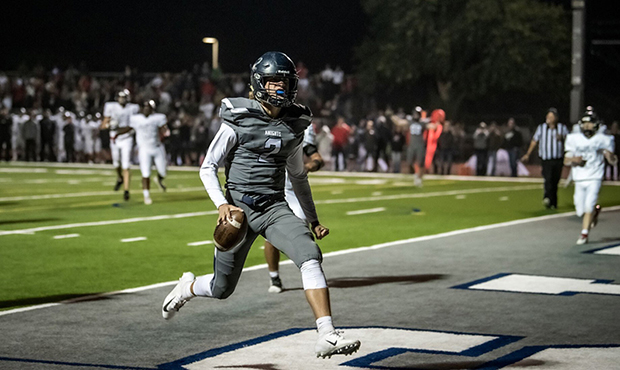
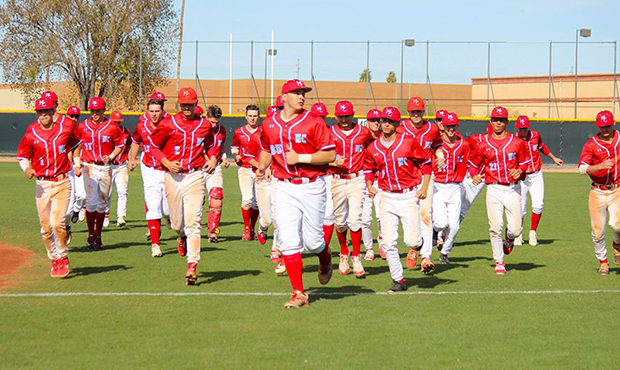
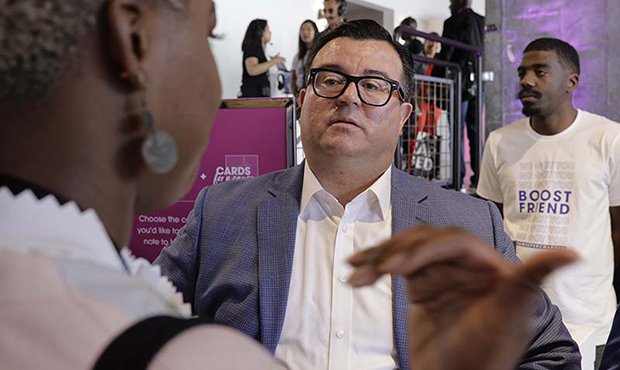

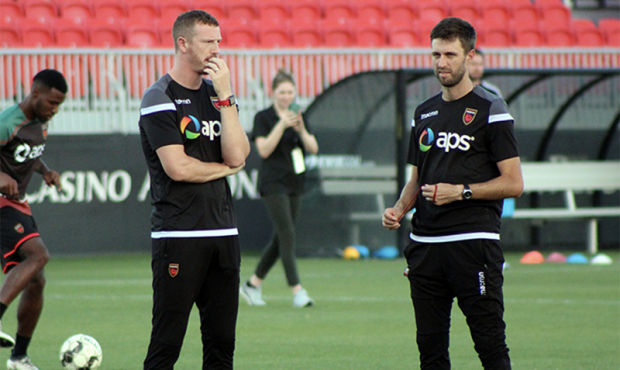
Comments